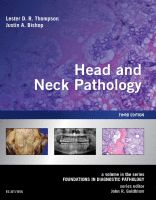Physical Address
304 North Cardinal St.
Dorchester Center, MA 02124

▪ Squamous Cell Carcinoma Clinical Features Squamous Cell Carcinoma—Disease Fact Sheet Definition ▪ A malignant neoplasm arising from the mucosal epithelium of the oral cavity ▪ Related to incidence and location ▪ Most common malignancy of the oral cavity (>…

■ Fibroma The term fibroma, unless further qualified (e.g., ossifying fibroma, ameloblastic fibroma), refers to a localized proliferation of fibrous connective tissue in response to tissue irritation. As such, oral fibromas are reactive in nature, with some advocating the use…

■ Fordyce Granules Clinical Features Fordyce granules are considered benign ectopic sebaceous glands (not associated with hair follicles) that occur on the oral mucosa. A normal variant, they are reported in up to 80% of adults, most commonly on the…

▪ Precursor Squamous Lesions Precursor lesions are difficult to define because they have an increased likelihood of progressing to squamous cell carcinoma (SCC). A constellation of architectural and cytologic features constitute dysplasia, but these features are not uniformly accepted or…

■ Squamous Papillomas Squamous papillomas are the most common benign neoplasms of the larynx and trachea, characterized by an exophytic squamous epithelium lining branching fibrovascular cores, often associated with human papillomavirus (HPV) infection. They may be solitary or may present…

▪ Vocal Cord Polyps and Nodules Vocal cord polyps and nodules represent reactive changes of laryngeal mucosa and adjacent stroma that result in a benign polypoid or nodular growth. The etiology is multifactorial, including laryngeal trauma (accidents or surgery), excessive…

Malignant tumors of the sinonasal tract (SNT) are rare, comprising less than 1% of all neoplasms and about 3% of those of the upper aerodigestive tract. Squamous cell carcinoma (SCC) and adenocarcinoma are strongly associated with environmental factors, including the…

▪ Sinonasal Papillomas The mucosa of the nasal vestibule and the superior wall of the nasal cavity are lined by squamous and olfactory mucosa, respectively. The remaining nasal mucosa consists of ciliated columnar epithelium of ectodermal origin known as the…

■ Rhinosinusitis Rhinosinusitis is defined simply as inflammation of the nasal cavity (rhinitis), paranasal sinuses (sinusitis), or both (rhinosinusitis). Clinical Features Rhinosinusitis is a common condition that can be caused by myriad etiologies, including allergies (most common), infections, aspirin intolerance,…